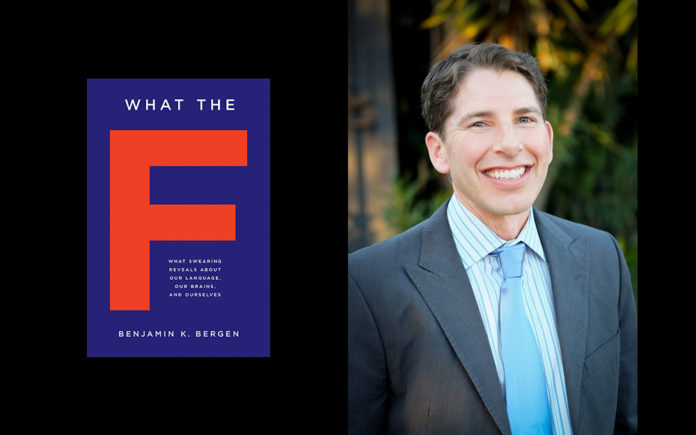
By Heidi Simmons
—–
What the F
by Benjamin K. Bergen – Nonfiction
—–
I like a cuss word now and then – one in particular provides me with a lot of satisfaction. Sometimes it just feels good to enhance my statement. Although it can be the right word to make your point, it can also backfire and make things worse. In Benjamin K. Bergen’s What the F: What Swearing Reveals About Our Language, Our Brains and Ourselves (Basic Books, 289 pages), swearing may be more than using “bad” words, it may be a natural part of our language.
Author Bergen is a professor of cognitive science at the University of California, San Diego, where he directs the Language and Cognition Laboratory. He has made bad language his primary focus — really bad language. These are the heavy-hitters, which are banned for public use. You can hear and read bad words daily. But, they are most often coming from private communication sources and our friends. (As an example, I have used the F word in this column. My editor allows me to express myself and my right to free speech as a columnist.) But the wider use of profanity is also on the rise. From politicians to pre-teens, profane tweets are more prolific than ever, revealing much about our society’s growing intensity.
Bergen divides profanity into four main categories: religion, copulation, bodily function and social groups. (Although my editor is generous and understanding, I will not repeat them. You have to get the book if you haven’t already figured out what the real taboo words are.)
The author reveals the history of our bad words and their usage. He looks at other cultures as well to see how bad language is expressed around the world. Japan has only one bad word: “Baka” which means foolish. Hardly seems to hold any power from an American point of view, but in Japan to be called baka is an insult.
The irony about our most beloved and despised bad words, is that all profane words were derived from non-profane origins. Again, I will not give examples, but it is shocking to think that some of the words we consider vulgar and totally inappropriate were once street signs or spoken in polite society. Turns out, some bad words were once fashionable.
Bergen also breaks down forbidden four letter words to explore the structure of the sound quality.
Neurologically, profanity use comes from different places in the brain. There is reflexive swearing for instance when you stub your toe or slam your finger in the car door. I use profanity more emotionally –irritation, anger, and the incompetence of others — or my own.
Finally, the author asks the most important question: Does exposure to profanity have a negative effect on society? Bergan asserts that the relationship is in fact the other way around. “Our parents and the culture we grew up in programmed us to suppress profanity. But it’s re-enacting these same suppressive responses as adults that makes profanity as powerful as it is.” We like it!
What the F is a lot of fun to read, especially if you tend to use a curse word now and again and here and there. It is also a fascinating cultural experience. On page one, Bergen acknowledges that the words he will analyze in the book are vulgar, shocking, offensive and hurtful. But also important.
In writing about these words, at least for me, Bergen has taken some of their power away. As a reader, and a lover of the F word, it has given me understanding, insight and pause. I like to say it, but at the same time, hate to hear it from someone I do not know well. I am more selective and thoughtful about the use of my favorite curse word. But what the fuck do you care?










































